|
Our brothers careers have been productive, constructive, spirited, and prosaic. They displayed impressive skills, talents, and abilities They were, and we continue to be, a beautiful and lively expression of our enduring fraternal beliefs, and that underlying harmony is far-reaching in expectation for all brothers’, undergraduate and graduate. It is the core of what our fraternal founders asserted in 1848 and 1874 and 1899: to live active, commendable, and responsible lives, and to build up community. Clearly and compellingly, they added, and continue to add, positive value at the local, state, national, global, and fraternal level because they engaged life fully and responsibly. In short, they were authoritative pillars throughout life. They were-are exemplary in their citizenship, character, and their sense of dutiful responsibility, and, in many instances, they were leading voices in their career fields. They prove that success of any kind does not occur by luck or accident, and we remember them because they continue to provide that message for our time. Their spirit permeates our brotherhood, and it always will. We have long been, from one generation to the next, proud to be Omega Mu Fijis. We continue to cherish our fraternal friendships, our shared memories, and our evolving, forward-focused history at the University of Maine. These things, above and beyond everything else, are the underlying rooted connections that make us proud to be Omega Mu Fijis. Why, after all, should we believe otherwise? We have always exhibited a can-do fraternal spirit since 1874. And, to be sure, all present and future generations of Omega Mu Fijis will continue to do the same, with fraternal enthusiasm and commitment. As a brotherhood, we always see the path behind us and the way forward with equal clarity, and our future remains bright at 79 College Avenue because we fearlessly move forward, always guided by sound fraternal principles. Perge. Fraternal Portrait Walter Balentine, 1874 Walter Balentine's childhood home in Waterville, Maine. High School Coburn Classical Institute, Waterville, Maine Q. T. V. Years Our Coburn Cadet fraternal brothers: W. A. Allen, J. I. Gurney, R. D. Hunter, above; A. M. Goodale, and E. F. Hitchings, below. Postgraduate Years at Wesleyan and the University of Kansas Wesleyan University, 1874 Walter Balentine attended Wesleyan University after he graduated from Maine State College in 1874. While he was pursing his graduate degree at Wesleyan, he was an assistant chemist in the Connecticut Agricultural Experiment Station. He also spent three months as a professor of chemistry at the University of Kansas, filling in for a professor who was quite ill. He was also a principal of a high school in Fairfield Centre, Connecticut. Postgraduate Years in Germany: University of Greifswald and University of Halle Walter Balentine continued his graduate studies in chemistry and physics at the University of Greifswald for one year. After concluding his studies at the University of Greifswald, Walter Balentine attended the University of Halle to continue his studies in chemistry and physics. During this time, he was the assistant chemist in the Agricultural Experiment Station in Saxony. United States Department of Agriculture The United States Department of Agriculture, left, Washington, D.C., 1879. In the distance is the unfinished Washington Monument. Walter Balentine was appointed to the USDA to be an assistant chemist in 1880. It is interesting to envision the Lincoln Memorial behind the Washington Monument, a building which was designed by architect Henry Bacon, the younger brother of our Q.T.V, brother, Francis Bacon, who designed the repository for the Declaration of Independence and the Constitution of the United States, as well as furniture for the White House. Professor at Maine State College Head of the Department of Agriculture at Maine State College. Two pictures of Walter Balentine's office in Holmes Hall, 1888-1891, with a large framed picture of his senior portrait. The newly constructed Holmes Hall in 1888. The south and north wings of Holmes Hall would be added in 1889 and 1904, respectively. The second Q.T.V. Chapter House is to the left. Holmes Hall, Coburn Hall, the original Wingate Hall, and the first Phi Gamma Delta house were all designed by Frank E. Kidder, our fraternal brother. Holmes Hall Architect Frank E. Kidder, Our Q. T. V. Brother The Death of Professor Walter Balentine "Professor Balentine's death was a severe loss to the institution with which he had been so long connected and which he had served so well." "His sturdy good sense, practical judgement, and calm temperament enlivened by a vein of gentle humor, contributed to make him a valued and valuable college officer." "His frankness and sound common sense were my especial admiration; for when his opinion was asked it was given and always knew that he meant just what he said, and that he would say just what he deemed to be right, regardless of the opinions of others." Professor Walter Flint, our Q. T. V. brother. "Never striving for notoriety, or seeking to draw attention to himself unless he had something which seemed to him to be of value, he early came to to be regarded as being a man whose judgements his friends could rely.." "In all his relations he sought to govern his speech with the utmost consideration for others....,and, although always modest and unassuming, he always, he always had great influence with his associates." Professor George H. Hamlin, our Q. T. V. brother. "I loved him as a brother....what I most admired in Walter Balentine was his simplicity of character, joined to thorough honesty and earnest devotion to duty." Professor Whitman H. Jordan, our Q. T. V. brother. Balentine Hall Balentine Hall, 1914-196, is named in honor of Elizabeth A. Balentine, the wife of professor Walter Balentine. “What if the space be long and wide, That parts us from our brother’s side A soul-joined chain unites our band, And memory links us hand in hand.” (Phi Gamma Delta fraternity song) Fraternally,
Chip Chapman, ’82 Perge
0 Comments
Leave a Reply. |
Archives
December 2024
Categories |
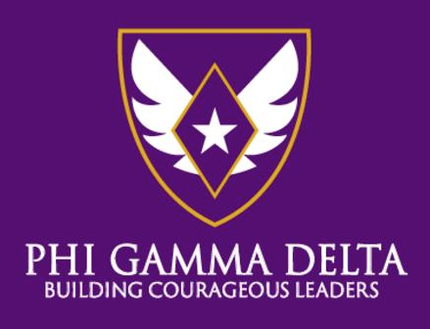
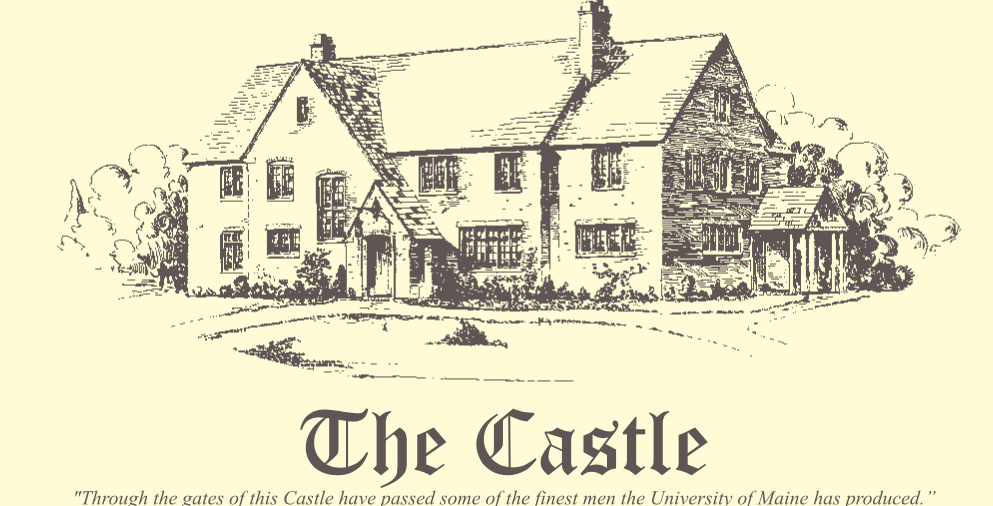
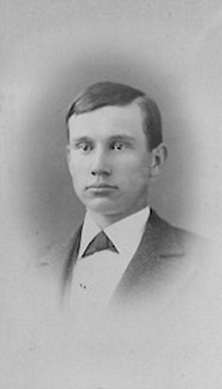
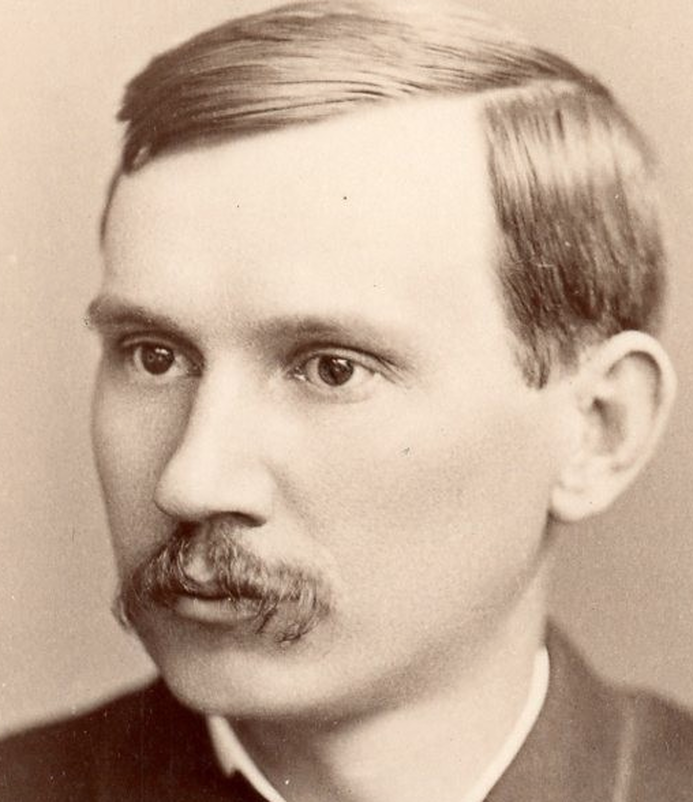
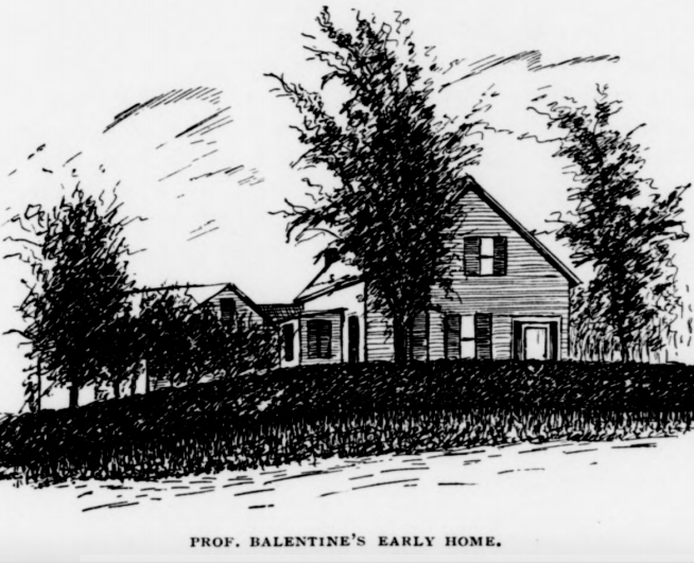
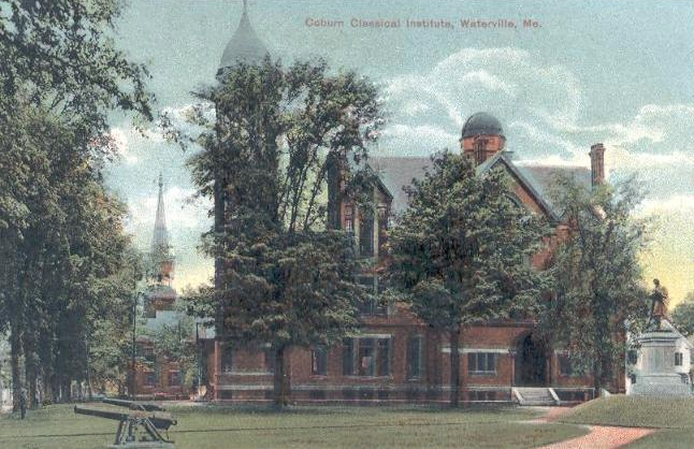

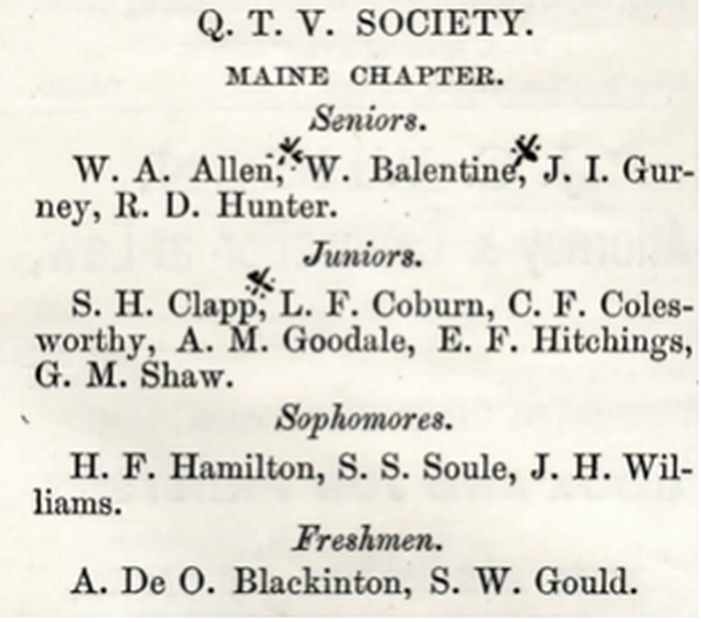
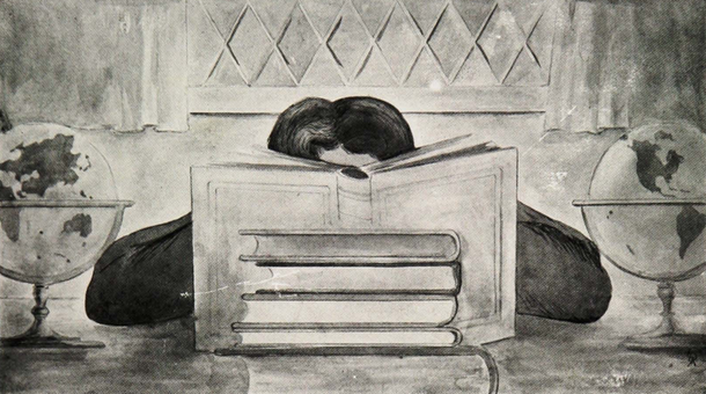
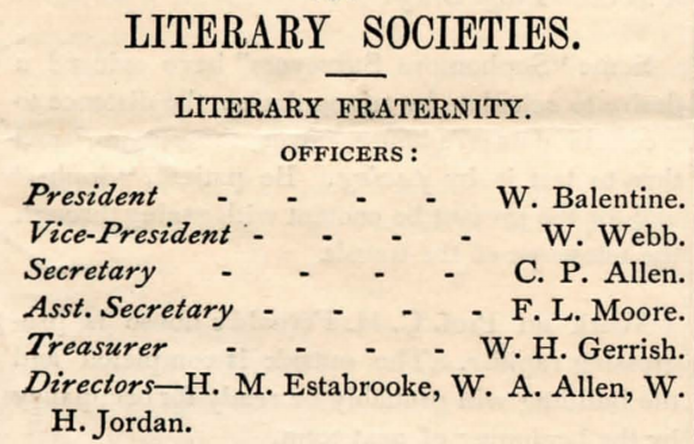
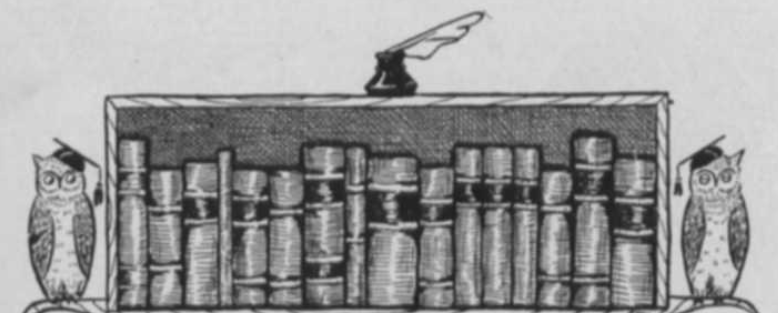
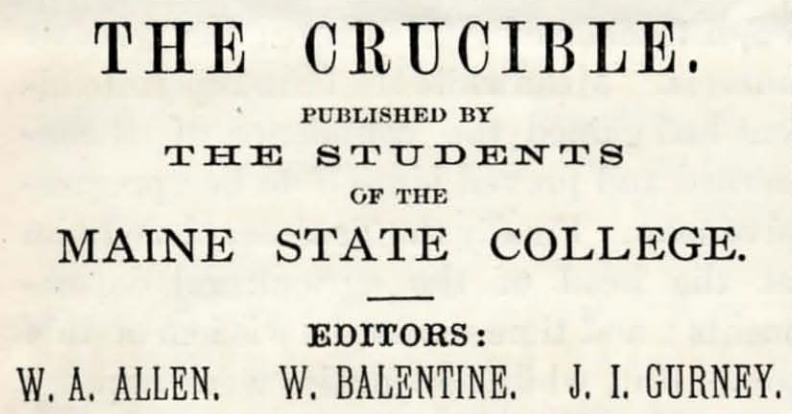
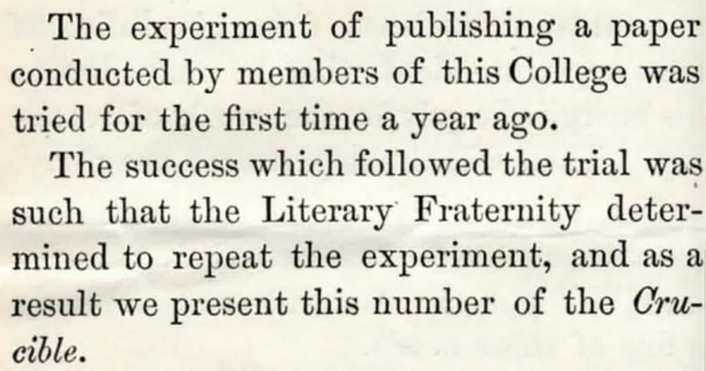
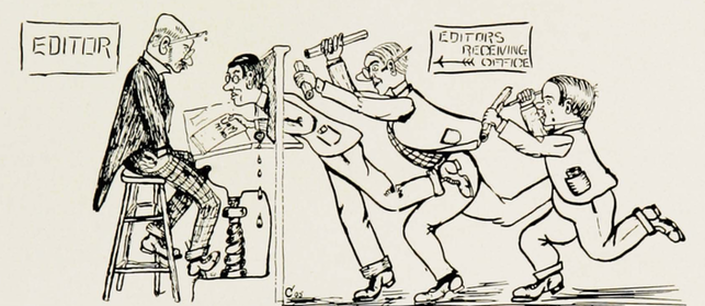

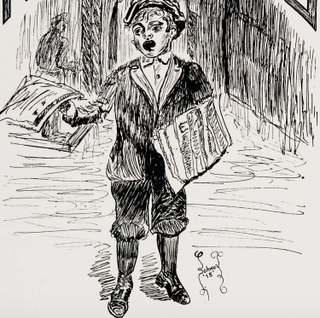
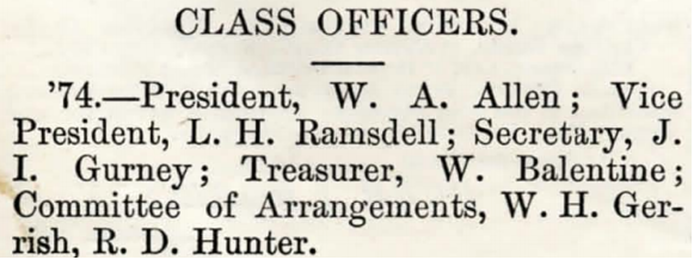

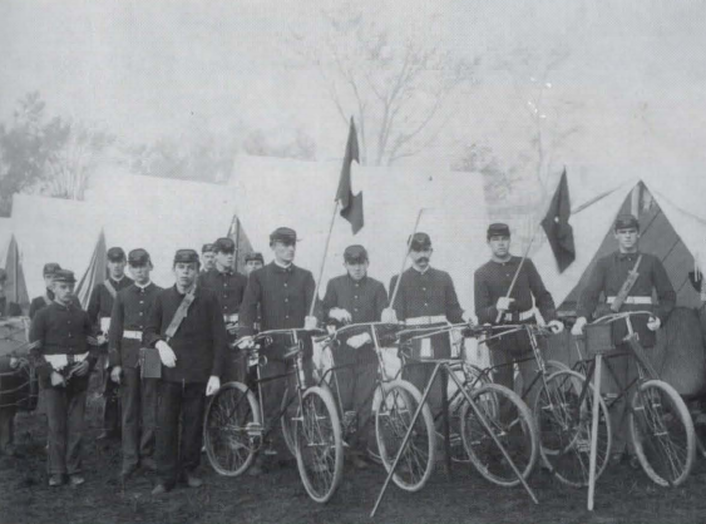
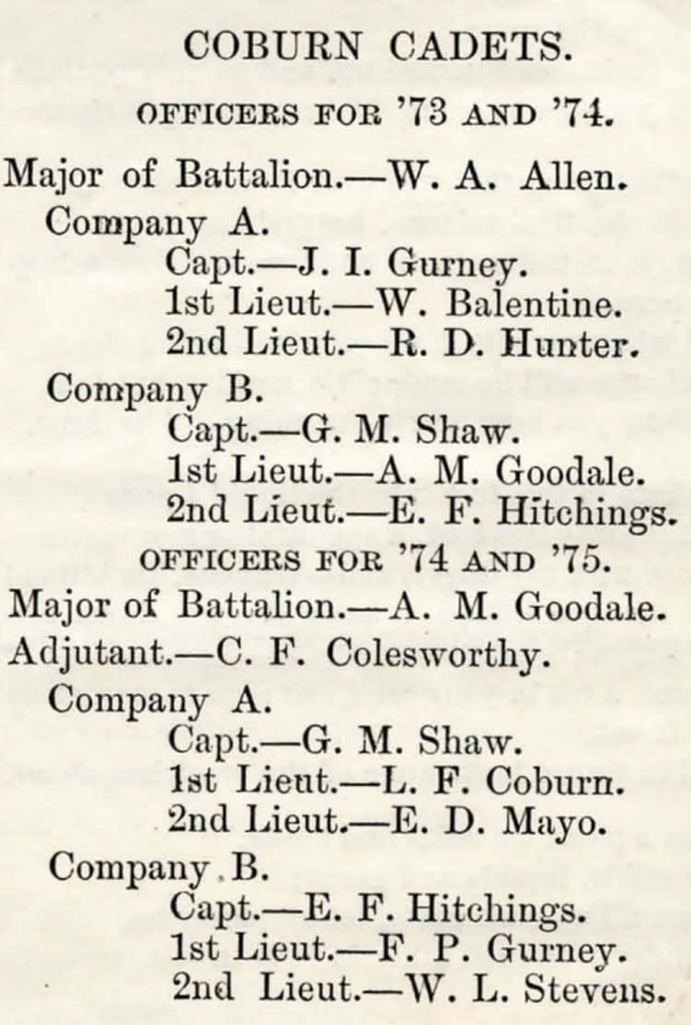
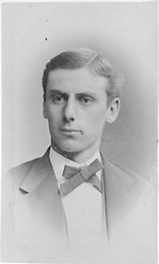
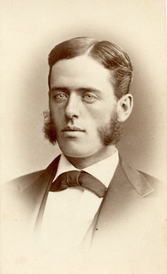
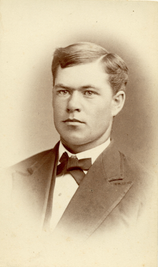

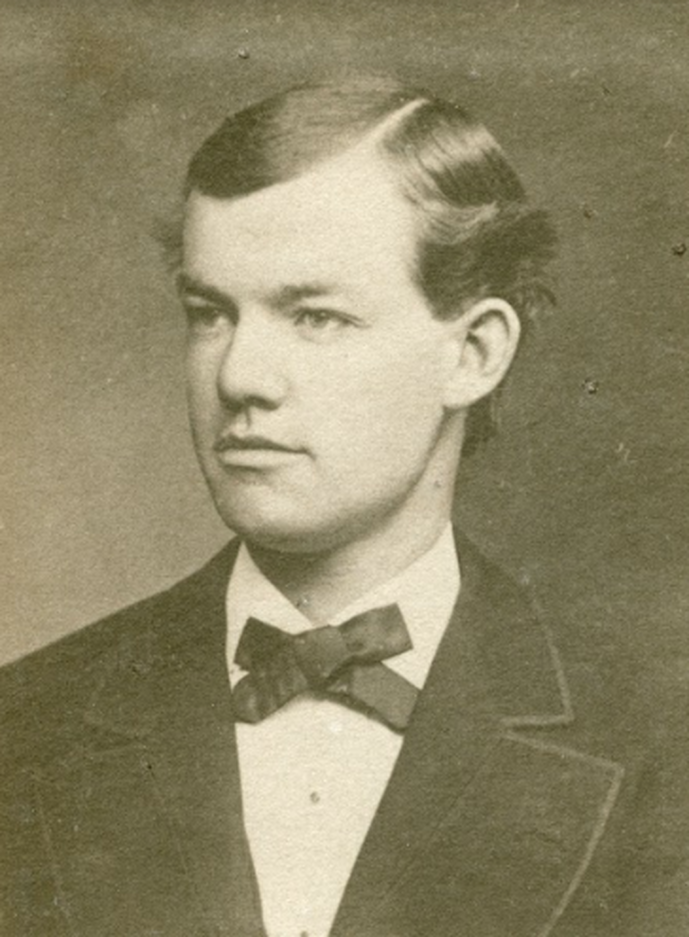

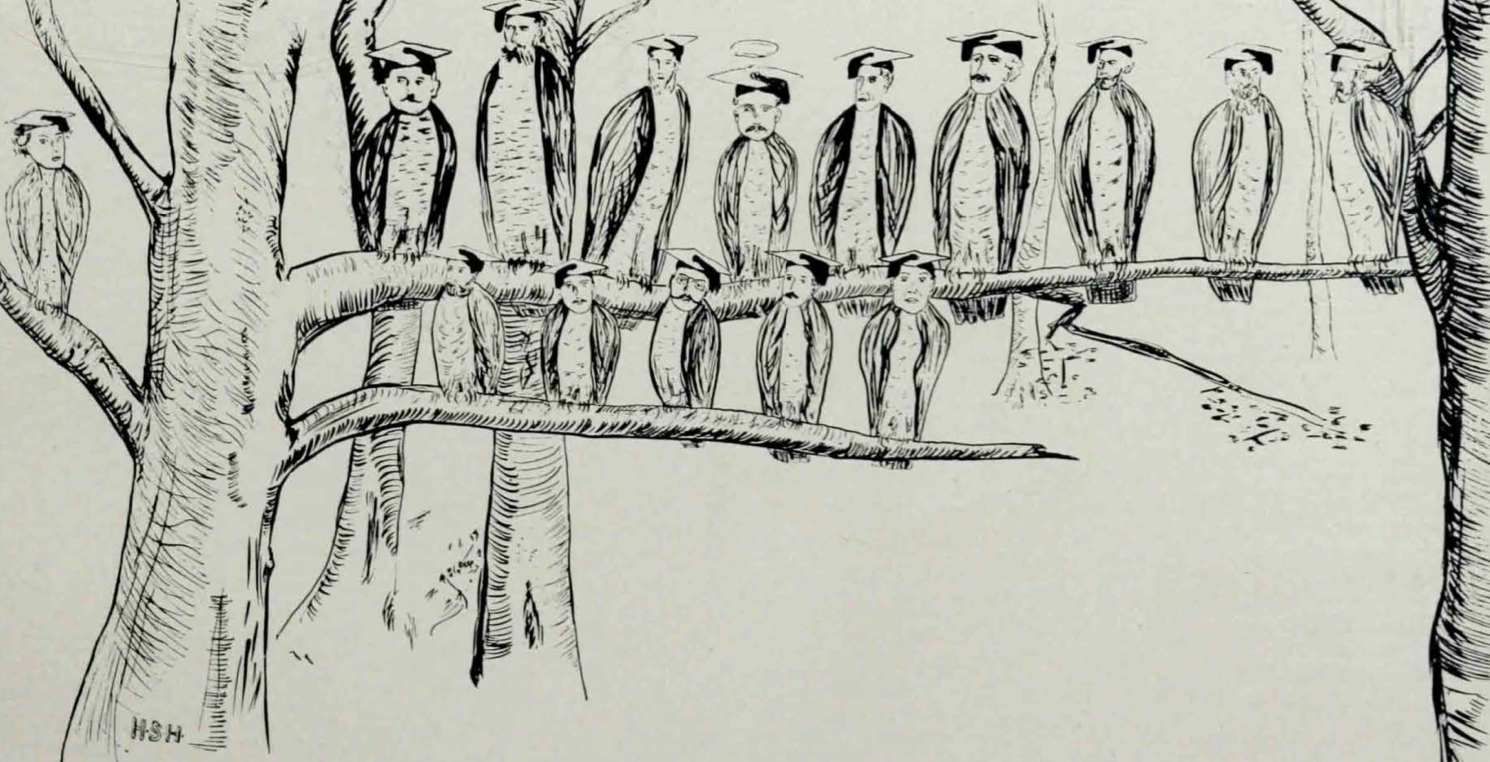
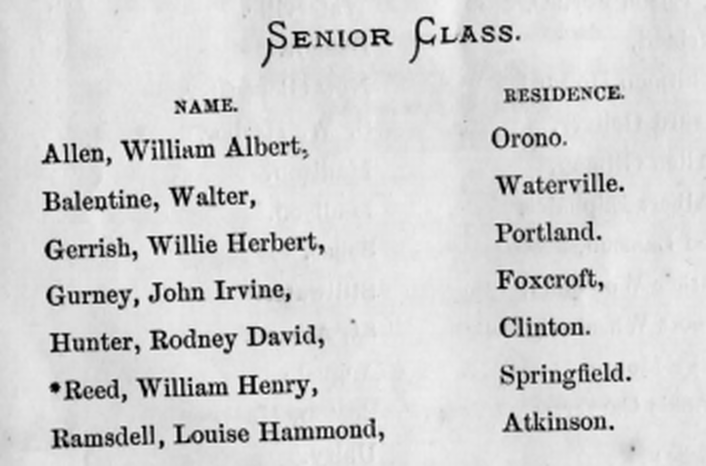
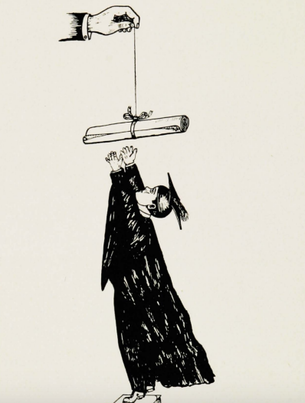
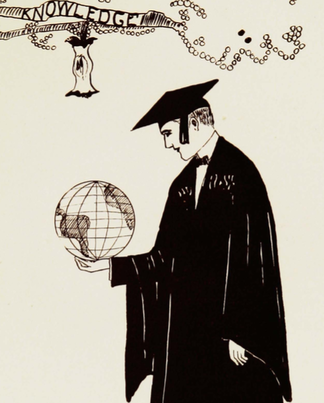
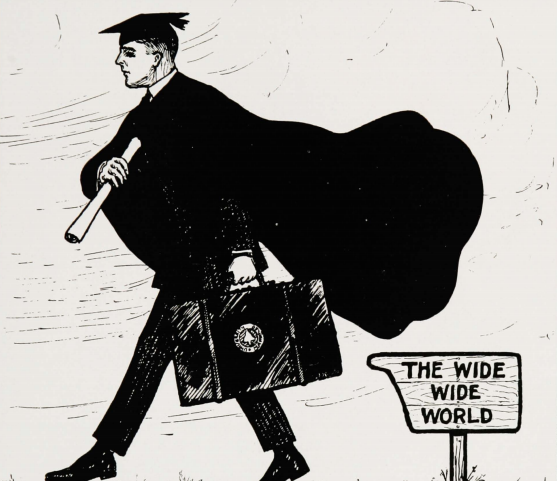
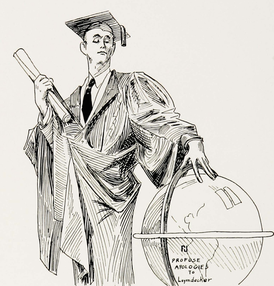
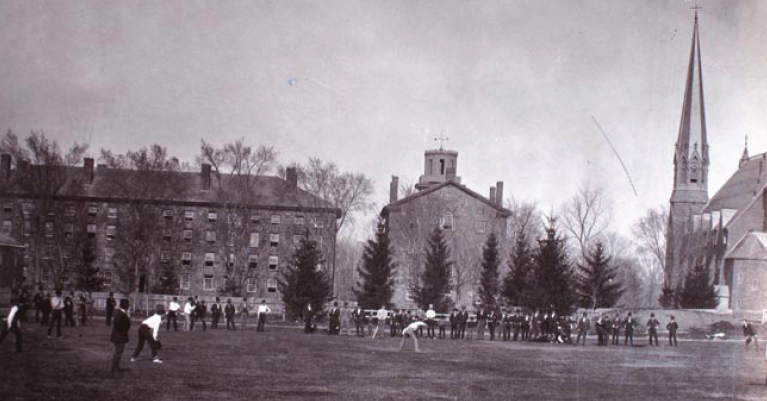
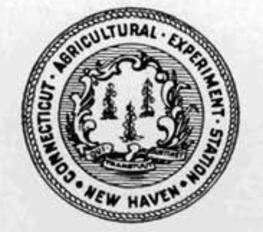
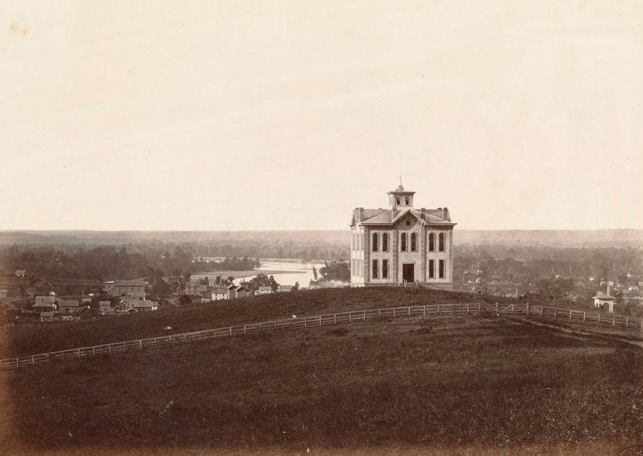
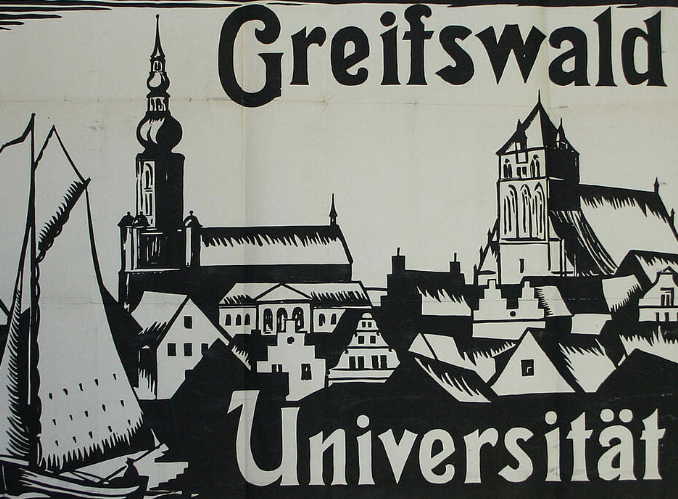
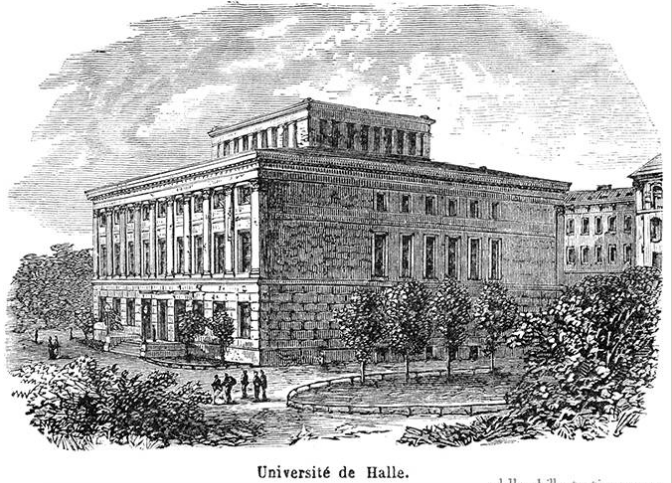
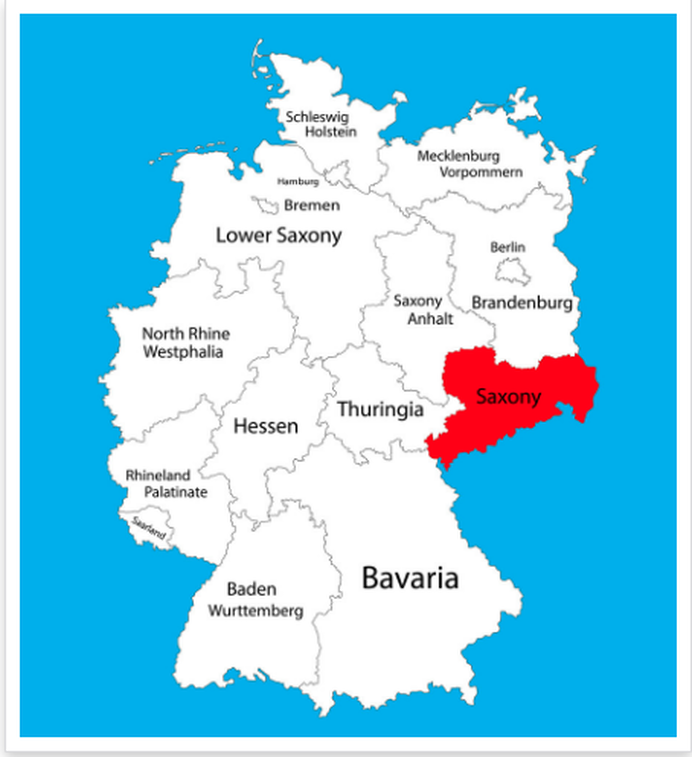
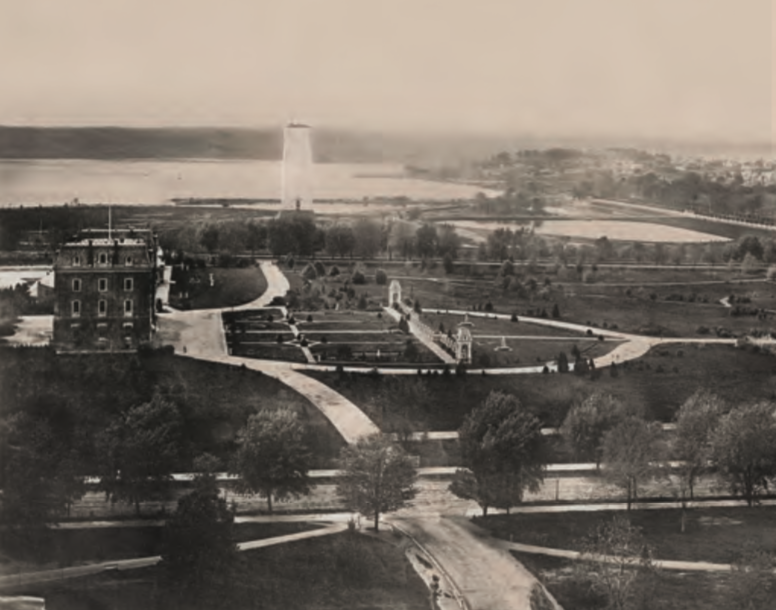

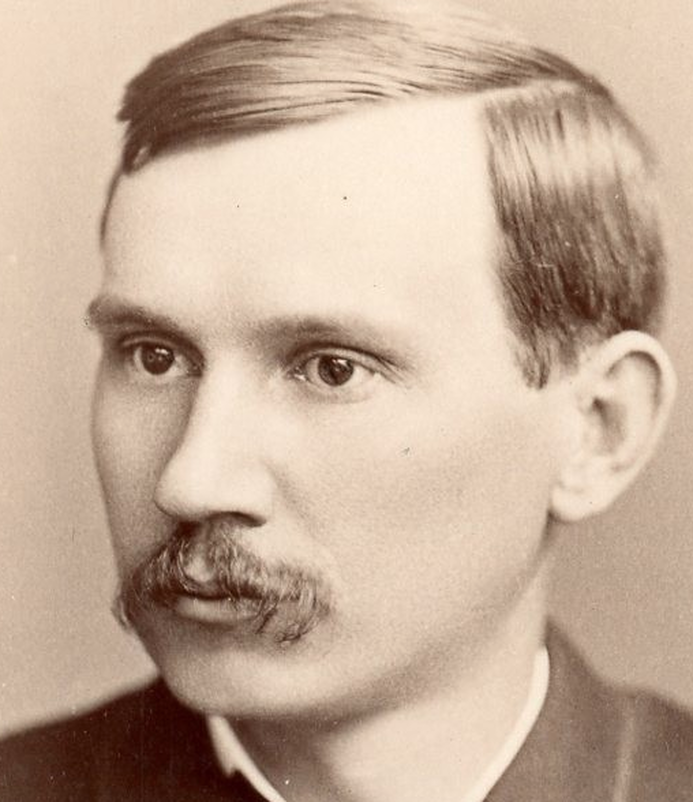
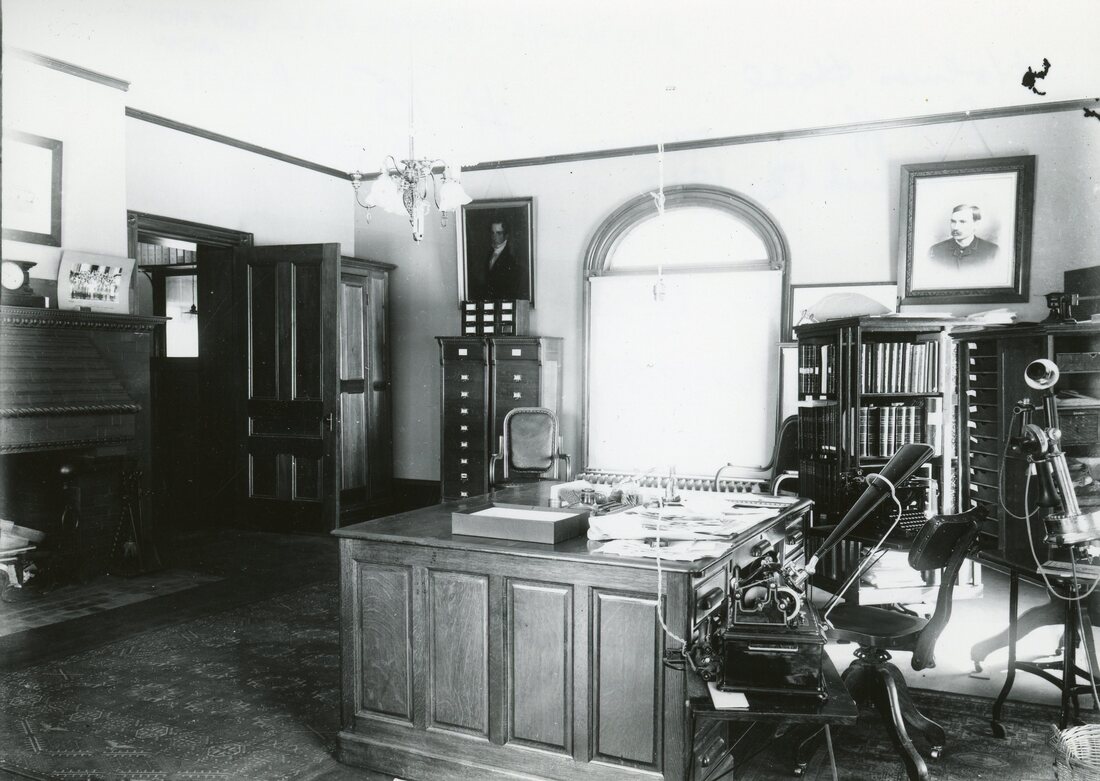
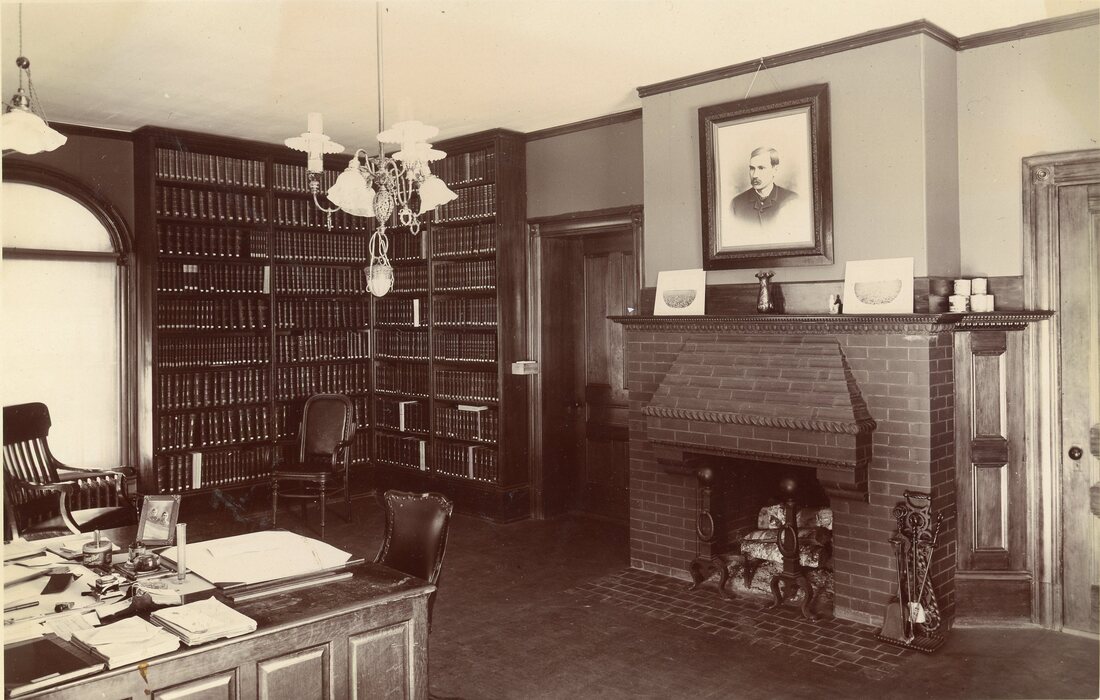
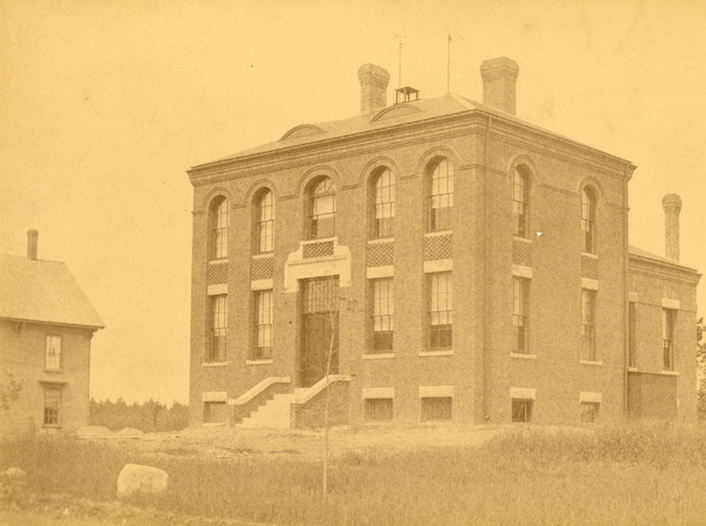
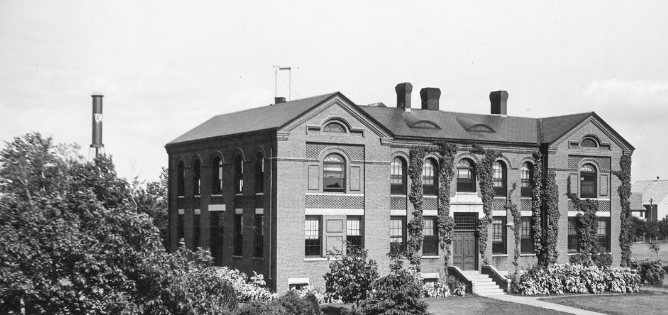
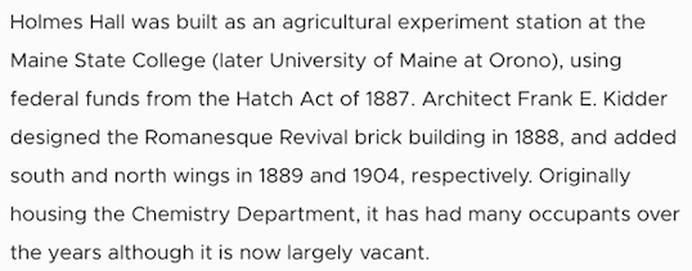

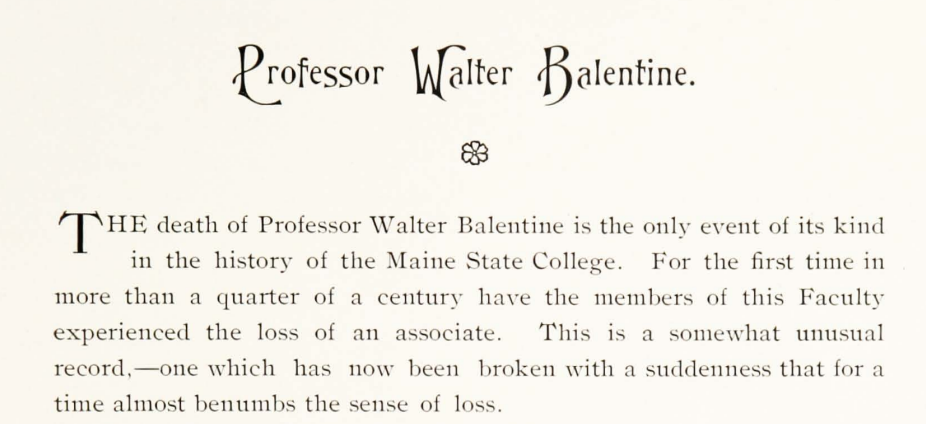

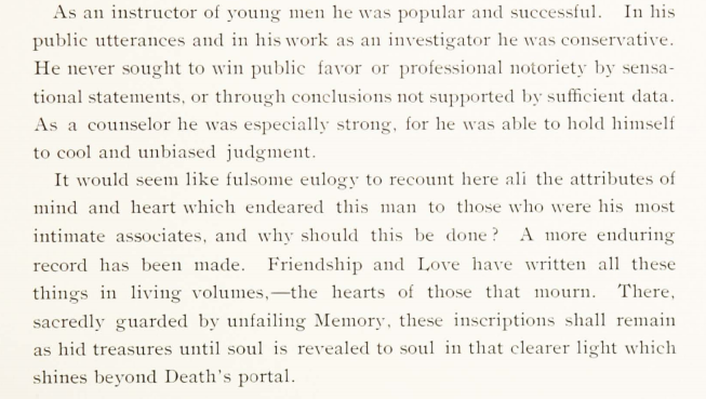
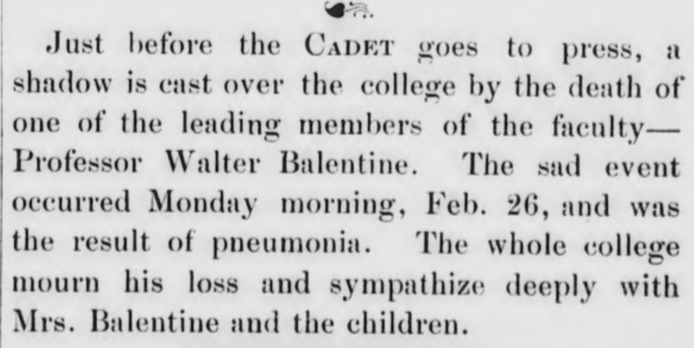
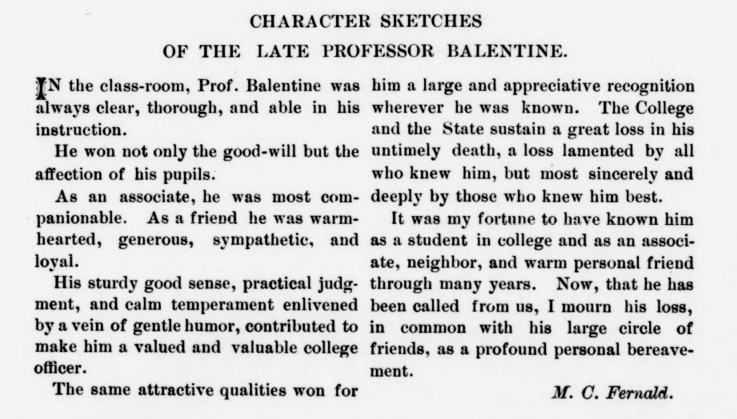
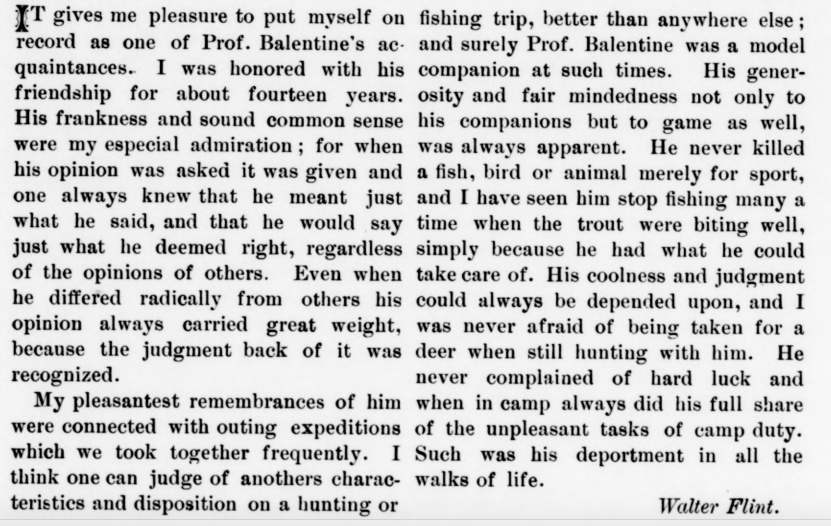

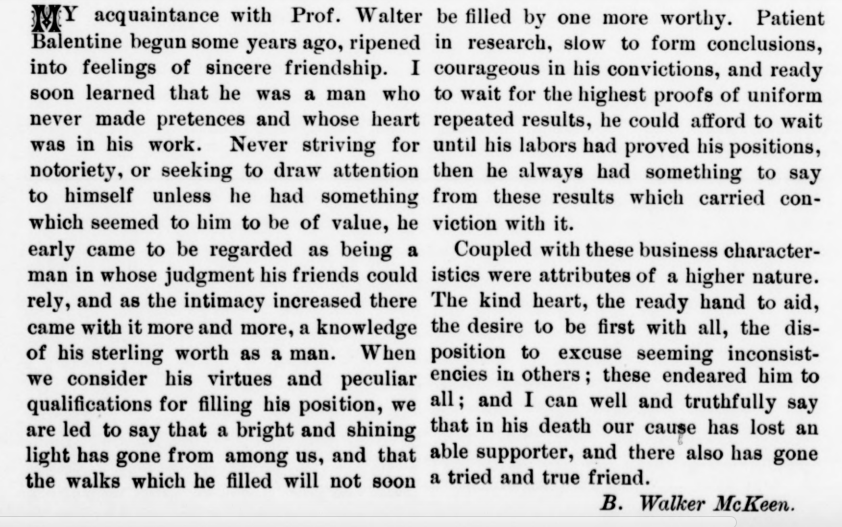
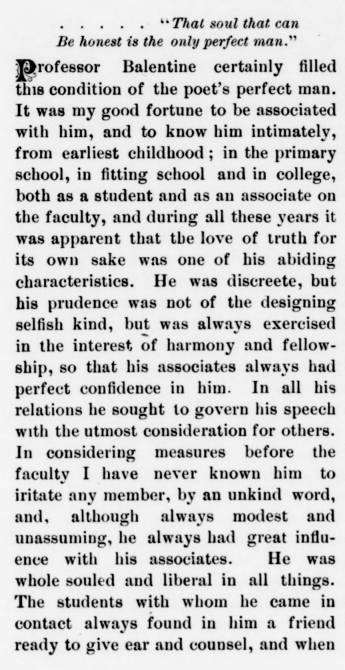
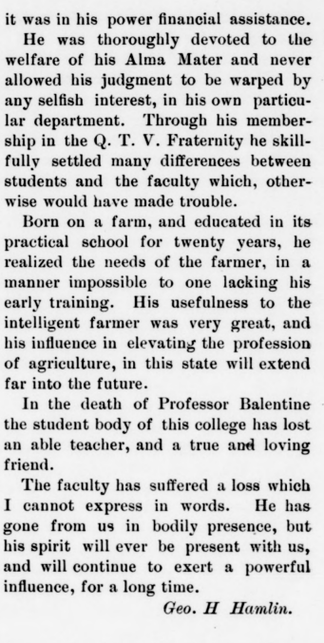

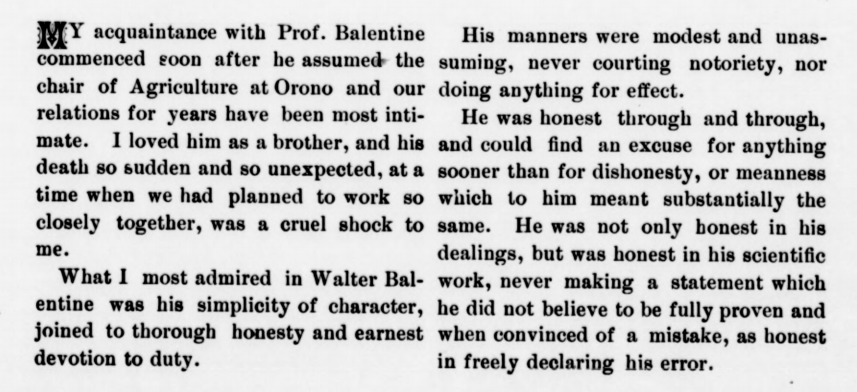



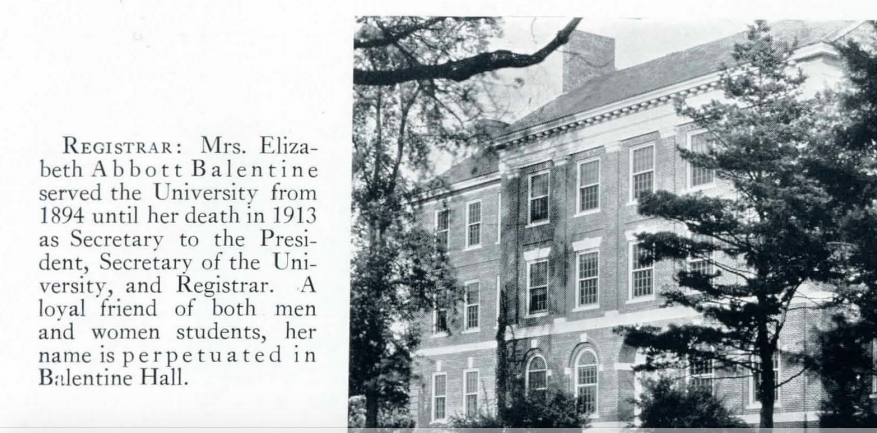
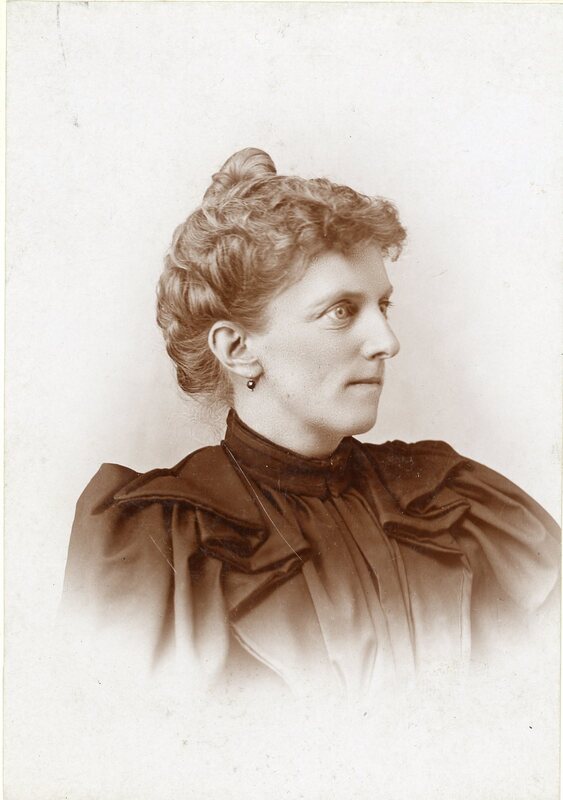
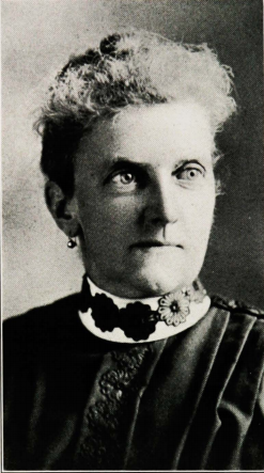

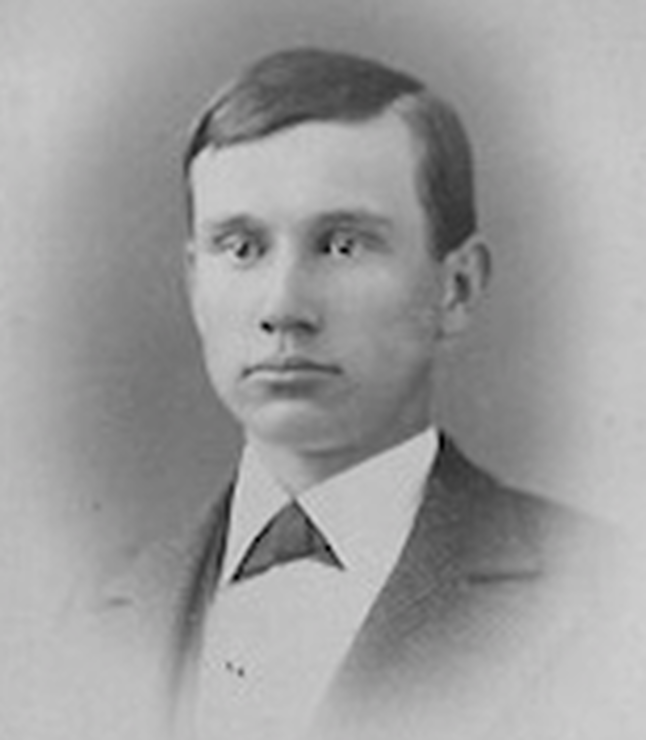

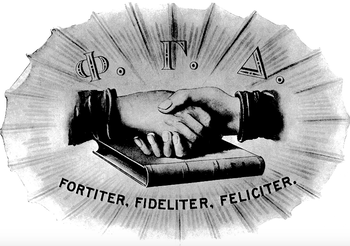


 RSS Feed
RSS Feed